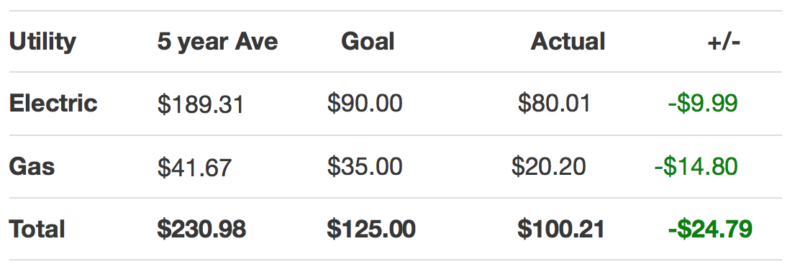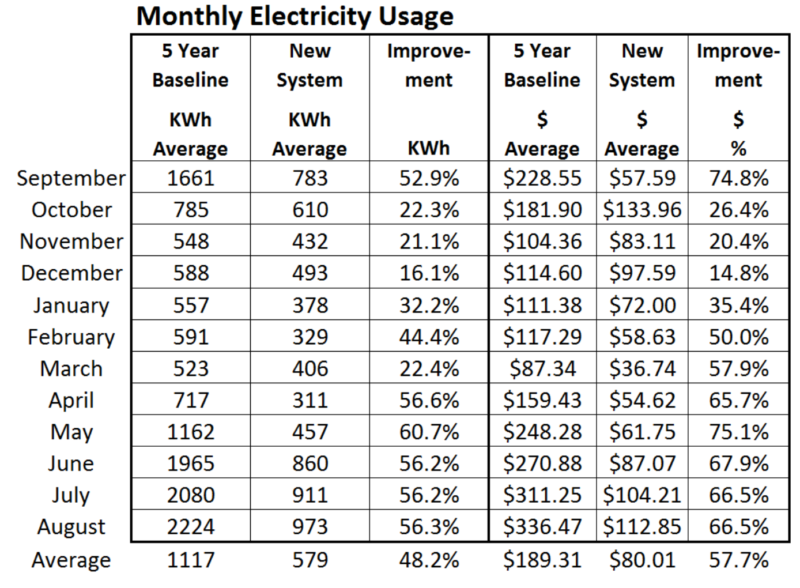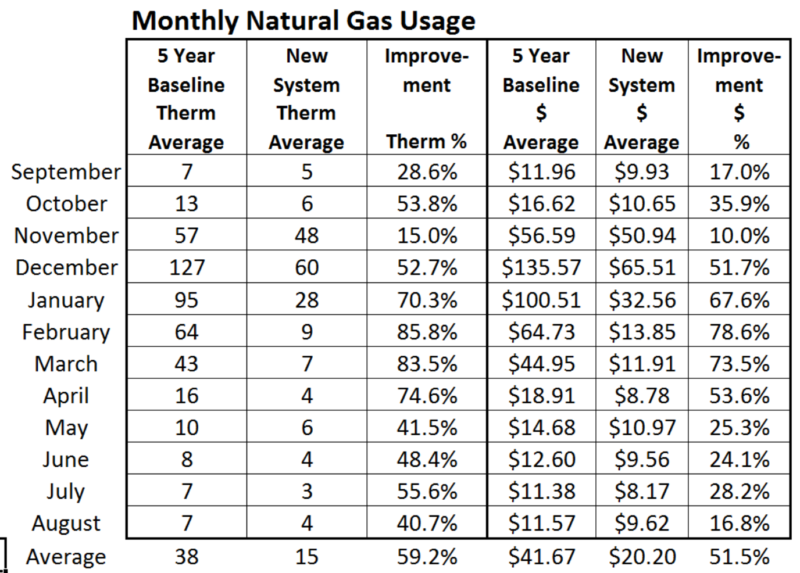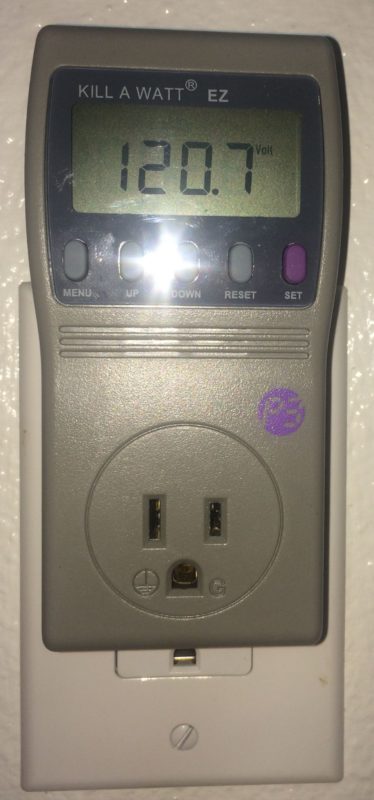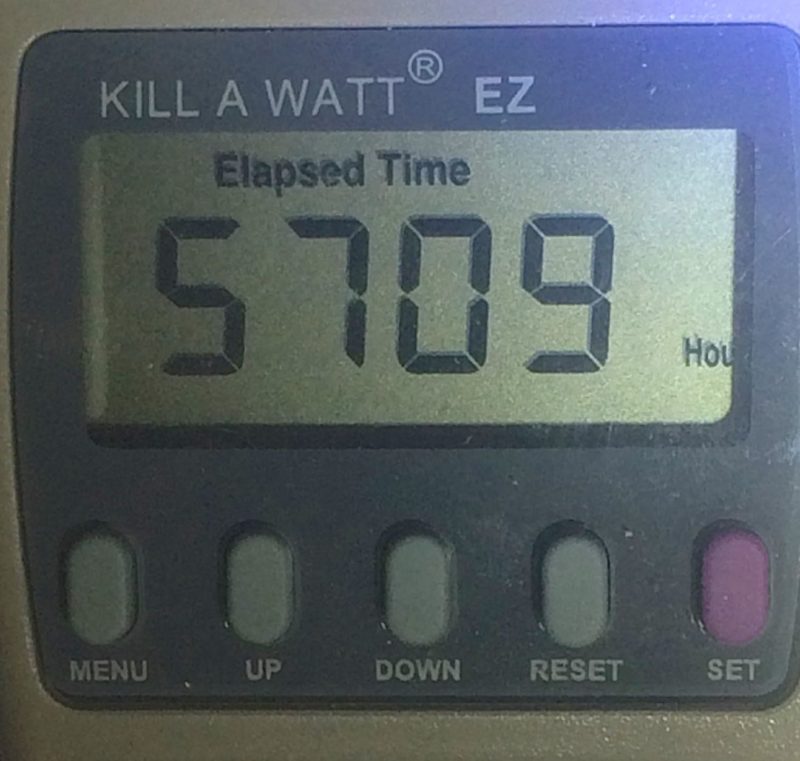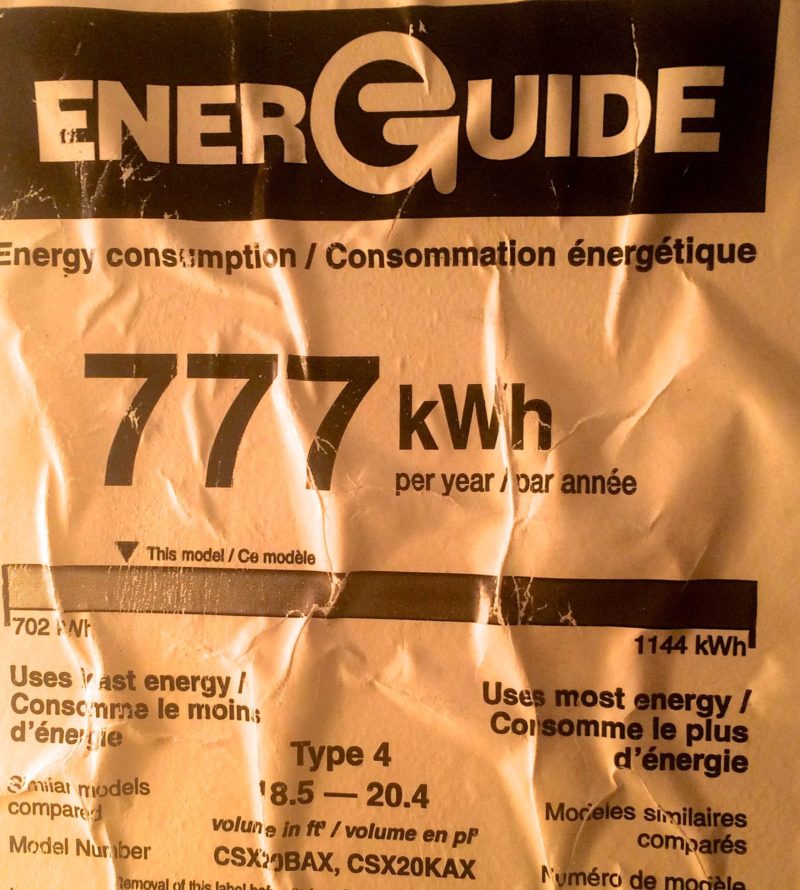In January I wrote that home solar might be lipstick on a pig, and it makes more sense to make a home energy efficient before even considering solar. I also promised to post monthly updates on our utility bills.
Well, we now have 12 complete months of energy usage under our belts after making our energy upgrade improvements. We’ll take a look at:
- Our original goals for improvement
- The results vs. the goals
- Some potential future savings
- A great tool for measuring kWh usage of a single device
Back in February I shared our 5 year average monthly bill for electricity and natural gas and our goal after the energy upgrades. Below are those 5 year averages, the goal, actual costs, and happily how much we were under our goal.
GOALS AND RESULTS
Monthly Utility Use (5 year average, Goal, Actual and $ Under Goal)
We dropped our average utilities from $230.98 per month down to $100.21 per month for electricity and natural gas combined, which is a reduction of 56.6%. Our goal for both was $125 per month and we beat that by $24.79 per month.
Here is a really telling statistic:
Prior to our energy upgrades we would have 5 months each year when we would use over 1,000 kWh per month, and two of those months were over 2,000 kWh per month.
Over the past 12 months we were under 1,000 kWh every single month.
Also keep in mind that during the 5 year baseline period both Joyce and I were normally not at home during the week, and for a good part of the past year I have been at home since retiring — meaning the numbers would have been even better had I been working full time and not at home.
HERE ARE THE FULL RESULTS FOR ALL 12 MONTHS
SOME FUTURE SAVINGS
We have two (gasp!) refrigerators. We only really need one, however we still have too much frozen food in both freezers to consolidate everything into one unit. That is what happens to a couple of DINKS who shop at Costco 🙂
I anticipate that getting rid of the older fridge will reduce our Total Electric usage by 13.35% per year. I will share the methodology in just a second.
Aside from our central air conditioning unit, our biggest consumers are the electric oven/range and electric clothes drier. Given that both are fairly new and we don’t do much laundry or cooking (we BBQ outside year round in Palm Springs) we are not in a hurry to replace these. However for a normal family with kids they would be VERY expensive to operate.
KILL A WATT
If one wants to save electricity, one really needs to know how much each appliance or consumer is using, especially if it is something that is plugged in 24 hours per day even if it goes into standby mode. The tool to do this is a KILL A WATT tool. There are several models and I bought the KILL A WATT EZ for under $30. What it does is (among a bunch of other functions) measure how much electricity is being used.
The unit is plugged into a wall socket and then the appliance plugs into the tester. It will measure voltage, amps, watts, kWh, elapsed time, and you can even program in your cost per kWh and it will calculate how much the appliance has cost you over the time it has been plugged into the tester.
Below the KILL A WATT is plugged into an outlet. You can see the voltage is 120.7 volts, which is perfect.
This website may be compensated for linking to other sites for sales of products. As an Amazon Associate I earn a small fee from qualifying purchases at no additional cost to the purchaser.
As you can see below, I had the spare refrigerator plugged in for 5,709 hours
and the fridge used 604 kilowatt hours (kWh) of electricity (below), which calculates out to be 2.539 kWh per day. Multiply that by 365 days and the spare fridge is using 926.735 kWh per year.
How Accurate Are Those “EnerGuide” Stickers?
Actually pretty good. Our spare fridge is around 20 years old and is using about 927 kWh per year, versus an estimated 777 kWh when it was brand new.
CONCLUSION
I was right, for us Solar would have been lipstick on a pig. By the way, the cost to lease a solar system would have cost more per month than what we spent for both electricity and natural gas over the past 12 months. However, we do not know how much these utility rates will go up in the future. But then, we don’t know how long we live either.
